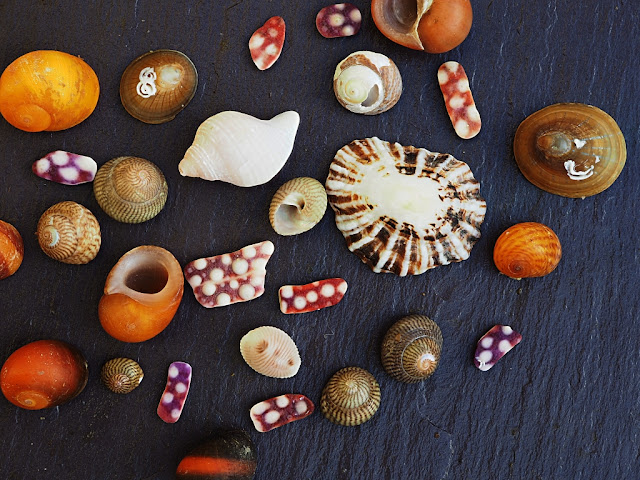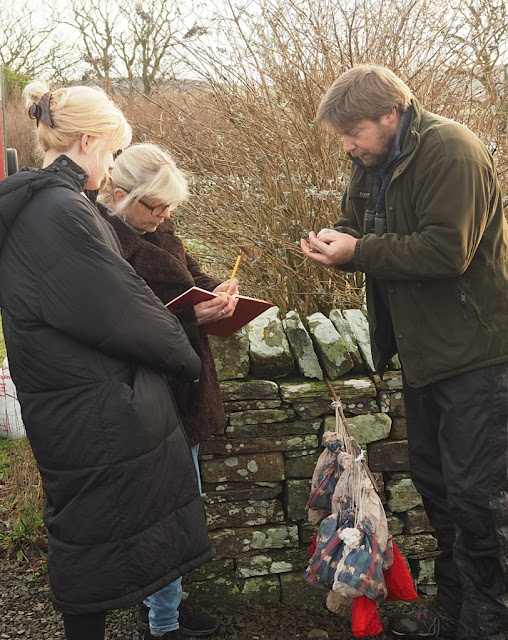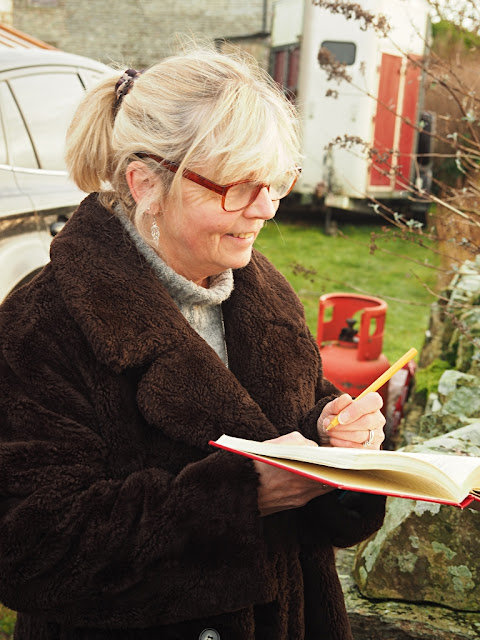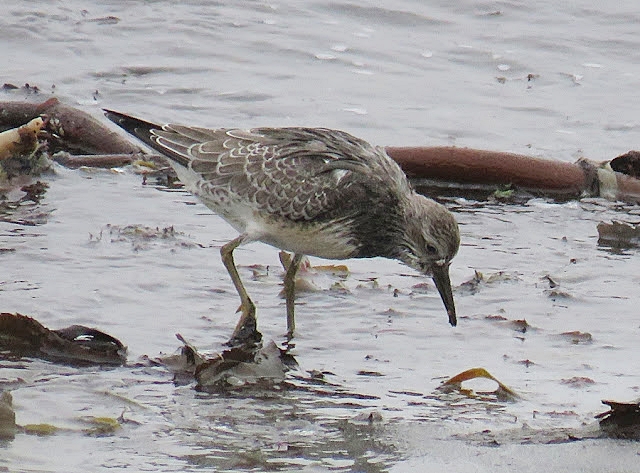My thought to record 365 species new to me over the next year have led me to briefly investigate different Classes. What would be possible? A quick look at sea shells show that there is a huge potential there, but identification is a challenge. Fortunately, thanks to the excellent folk at British Marine Mollusca FB Group help is to hand.
We went for a walk along Evie Beach on Xmas Eve. It was a lovely day. There were many shells on the beach, so I started picking them up.
 |
| A razor shell or, locally, a spoot. However, there are a few species. |
|
|
|
 |
Ensis siliqua. Ensis magnus (was arcuatus), thanks ST, these are very, very tricky to ID correctly.
|
There is an excellent resource for identification here: - https://naturalhistory.museumwales.ac.uk/BritishBivalves/home.php? - see the side panel. And I was led to purchase the NHM published British Bivalve Shells by Norman Trebble (1966). Sadly, there were no prior owner notes in this book which was a tad more than the £1 jacket price! Well worth the £22 tho'.
This next one caused a bit of debate.
 |
Lutraria lutraria, Common Otter-shell.
|
I'd been confident this was Mya arenaria, the differences are fairly subtle. There are other Lutraria species that occur here and so a considerable degree of caution in ID is required.
 |
Cerastoderma edule, Common Cockle. Even this common species needs careful ID.
|
 |
Chamelea striatulla, Striped Venus. In recent years there have been changes to the taxonomy so need to check the Museum of Wales site for the latest name and the history of naming.
|
 |
Mya truncata, Common Gaper. I managed to ID this correctly with no aid!
|
 |
Venerupis corrugata.
|
In mind of the work to identify all these I've decided to take Xmas Eve as the starting point! I think this will be a bit of a challenge, and will likely require a trip or two south, even to England. I'm expecting beetles to come to my rescue to some extent, I have a basic knowledge and know there are lots of species locally that with a bit of an effort I can find and identify. Plants will be another opportunity to add species, especially if I go over to Hoy a few times.
Over Xmas there was a cold snap and the Bramblings returned in force with 36 under the feeders.
 |
| Brambling. |
A few trips to the coast and Loch of Skaill offered a few photographic opportunities. (Three dead Puffin on The Links beach tho.)
 |
Hoodie Crow.
|
 |
| Teal. |
 |
Whooper Swan family.
|
The local Whooper Swans have raised two chicks but incoming birds from Iceland don't appear to have had a good breeding season with this the first juv I've seen.
On 23 December, Loch of Bosquoy was super. A Goosander, 5 Blackwits, 445 Lapwing, 72 Golden Plover, a Hen Harrier, 98 Skylark and a record 35 Shoveler were the highlights.
 |
Shoveler, Goosander and a Coot.
|
 |
445 lapwing and some of the Golden Plover.
|
 |
48 of the Skylark.
|
On Christmas night there was a heavy overnight frost. Christmas Day was sunny, still and very cold. The beach at Skaill was frozen, the hound managed to fall over. Frosted seaweed is an unusual and photographically interesting subject.
As the days lengthen, yes really, signs of spring. Green leaves of Lesser Celandine breaking through, if frosted.
 |
Lesser Celandine.
|
A new mammal for my Orkney list, looked to be tethered tho.
 |
Giraffe, near Skaill.
|
New species 6.


























































